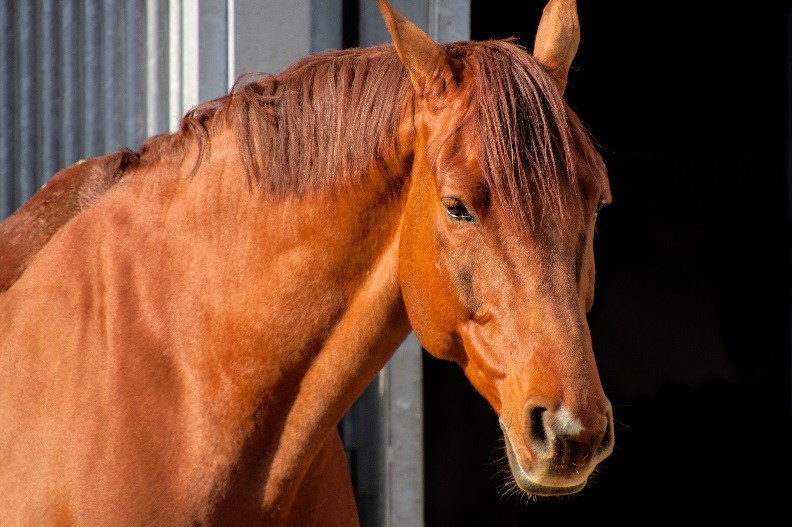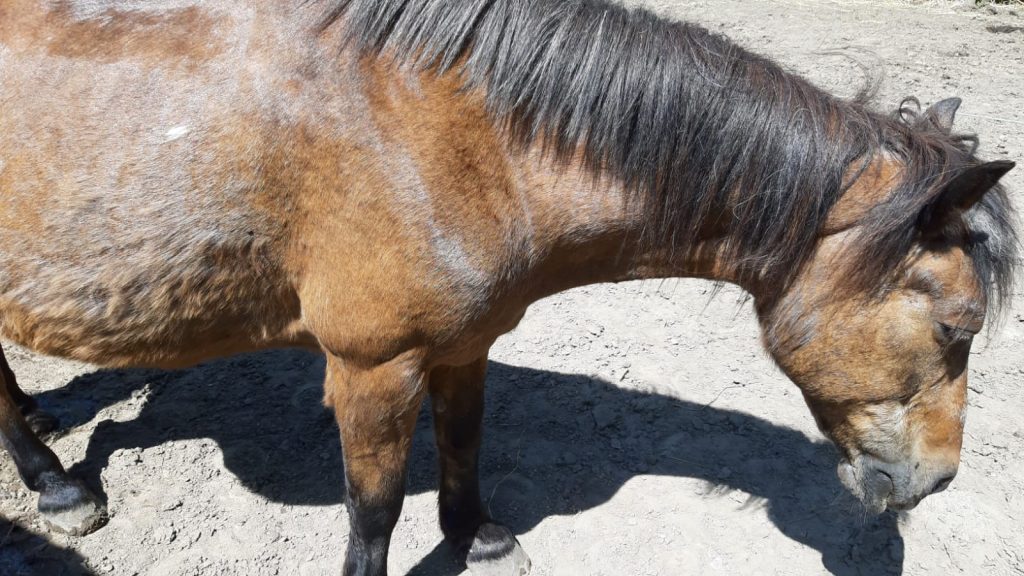ECoV – an emerging viral disease
As veterinarians, we are aware of the importance of emerging viral diseases. Especially, when spread rapidly and therapeutic options are limited.
Equine Coronavirus has long been known to cause diarrhoea in foals, but in recent years been associated with disease in adult horses as well.
Coronaviruses are single-stranded, non-segmented, enveloped RNA viruses, belonging to the Coronaviridae family, found in numerous mammals and birds, where they cause different enteric, respiratory, hepatic or neurological diseases. Equine Coronavirus (ECoV) is classified within the Betacoronavirus 1 genus, along with Bovine Coronavirus (BCoV). ECoV is however genetically distinct from the human SARS-CoV-2, and there is no evidence to indicate that horses could contract or spread SARS-CoV-2 to other animals or humans.
The incubation period for ECoV is short. It has been shown that ECoV RNA can be detected as early as 72-96 hours post-inoculation and continues to be detectable until 10-14 days post infection.
Studies have shown a faecal-oral transmission route.
Symptoms
11 years ago, an unusual outbreak of fever and enteric symptoms in 2-4 year old racehorses were seen in Japan. Only 10% of these horses showed enteric signs out of the 132/600 (22%) horses that became sick. The same racing venue experienced an additional outbreak with similar signs three years later. Outbreaks have since been observed throughout Europe and the USA.
Common symptoms, in clinical affected horses are fever, anorexia, lethargy and/or enteric symptoms (in about 10% the cases). The lack of enteric symptoms in adult horses, such as colic and/or changes in faecal character, may relate to the intestinal section affected by the virus. ECoV has been shown to cause enteritis in both foals and adult horses. While enteritis is consistently associated with diarrhoea in foals, it may not affect the faecal character of infected adult horses, which might only show colic symptoms, if any enteric symptoms at all.
Most infected adult horses recover with minimal or no medicinal treatment within 2-4 days, while some may require intensive care to resolve leukopenia, systemic inflammation and metabolic disturbances. Morbidity rates have been reported to range between 17-57%, with mortality rate being very low.
Complications are rare and have been associated with disruption of the gastro-intestinal mucosal barrier leading to endotoxaemia, septicaemia and hyper-ammonemia-associated encephalopathy.
Of interest is the observation that clinical expression of ECoV infection is age-dependent with foals rarely developing clinical disease. Given the lack of documented outbreaks at large breeding farms, it is possible that circulating virus amongst foals and breeding stock confers protection against clinical disease. A recent study supports this, as they found higher seroprevalence to ECoV in healthy breeding animals, compared to non-breeding horses.
The lack of gastrointestinal symptoms often misleads the equine practitioner into ruling out an enteric pathogen. Haematological finding, such as leukopenia due to neutropenia and/or lymphopenia, although not specific for ECoV, should direct the diagnostic workup towards a viral disease.
Diagnosing ECoV
RT-PCR is used to detect ECoV in faeces, and has proven to be more sensitive and specific than other test methods, such as electron microscopy and antigen capture ELISAs, RT-PCR test has a quicker turnaround time and is more cost-effective.
It appears that longer duration and higher peaks of viral shedding are observed in clinically versus non-clinically infected horses, although both groups may contribute to environmental contamination and viral transmission.
While several factors, such as viral strain, age of patient and co-morbidity influence the outcome of infection, a recent study was able to associate ECoV viral load measured by RT-qPCR with mortality, as seen by other corona-viruses, such as Feline Coronavirus (FCoV) and the human SARS-CoV-2.
Due to the rapid autolysis of the gastro-intestinal tract, it is relevant to have a necropsy performed rapidly or have representative samples collected and frozen for ECoV detection and placed in formalin for pathological evaluation. ECoV can be diagnosed post-mortem by RT-PCR on faeces or small intestinal biopsies, submitted without fixation.
Prophylaxis
There are no vaccines against ECoV available yet, and specific preventive measurements are scarce. Due to the close genetic homology of ECoV with BCoV, serological responses to BCoV vaccines have recently been investigated, showing measurable antibodies against BCoV. These are not recommended to use at this time, due to the lack of efficacy data.
The cornerstone of ECoV prevention is strict biosecurity measurements aimed at reducing the risk of introducing and disseminating ECoV on the premises.
Conclusion
It is important to be thorough, when working-up horses presenting with fever, anorexia and lethargy, with or without concurrent enteric symptoms (mostly colic signs in adults and diarrhoea in foals). And important to isolate such horses until ECoV, as well as other potential infectious pathogens (e.g. Influenza A virus, Equine Herpesvirus 1 and 4, Streptococcus equi equi), have been ruled in or out by PCR.
It may be wise to test the population to uncover subclinically infected individuals as well, as they may shed the virus too.
ECoV PCR-positive horses should be isolated and stable or herd mates closely monitored until the outcome of past-exposure has been determined.
Outbreaks of ECoV are generally short lasting, especially when strict biosecurity measures have been followed, and quarantine can routinely be lifted 2-3 weeks following the resolution of clinical symptoms in the last affected horse.
Common disinfectants inactivate ECoV, but it is not known how long ECoV remains infectious in the environment. SARS-CoV-2 has been shown to persist up to 2 days in wastewater and dechlorinated tap water, 3 days in faeces and 17 days in urine at room temperature. The survival of the virus is even longer at lower temperatures.
In conclusion, equine practitioners should take advantage of the knowledge gained over the past decade in the field of ECoV in adult horses and foals. Although further investigations are needed, we have more insights to the disease, its clinical picture, diagnostic tools available and treatment modalities in place, in order to have a successful outcome of horses infected with ECoV.
Charlotte Hoffmann-Timmol, DVM und Dr. Svenja Möller
References
-
Wege H, Siddell S, ter Meulen V. The biology and pathogenesis of coronaviruses. Microbiol. Immunol. 1982;99:165-200.
-
Woo PC, Lau SK, Lam SC, Lau CC, et al. Discovery of seven novel mammalian and avian coronaviruses in the genus Deltacoronavirus supports bat coronavirus as the gene source of Alphacoronavirus and Betacoronavirus and avian coronaviruses as the gene source of Gammacoronavirus and Deltacoronavirus. J Virol. 2012; 86:3995-4008.
-
Zhang J, Guy JS, Snijder EJ, et al. Genomic characterization of equine coronavirus. Virology. 2007;369:92-104.
-
Oue Y, Ishihara R, Edamatzu H, et. Al. Isolation of an equine coronavirus from adult horses with pyrogenic and enteric disease and its antigenic and genomic characterization in comparison with the NC99 strain. Vet Microbiol. 2011;150:41-8.
-
Oue Y, Morita Y, Kondo T, Nemoto M. Epidemic of equine coronavirus oat Obihiro Racecourse, Hokkaido, Japan in 2012. J Vet Med Sci. 2013;75:1261-5.
-
Pusterla N, Mapes S, Wademan C, et al. Emerging outbreaks associated with equine coronavirus in adult horses. Vet Microbiol. 2013;162:228-31.
-
Pusterla N, Vin R, Leutenegger C, et al. Equine coronavirus: An emerging enteric virus of adult horses. Equine Vet. Educ. 2016;28:216-223.
-
Pusterla N, Vin R, Leutenegger, et al. Equine coronavirus infection. Emerg Infec Diseases of Livestock. 2017:121-132.
-
Miszczak F, Tesson V, Kin N, Dina J, et al. First detection of equine coronavirus (ECoV) in Europe. Vet Microbiol. 2014;171:206-9.
-
Bryan J, Marr CM, Mackenzie CJ, Mair TS, et al. Detection of equine coronavirus in horses in the United Kingdom. Vet Rec. 2019;184:123.
-
Nemoto M, Schofield W, Cullinane A. The first detection of equine coronavirus in adult horses and foals in Ireland. Viruses. 2019;14:11.
-
Davis E, Rush BR, Cox J, DeBey B, Kapil S. Neonatal enterocolitis associated with coronavirus infection in a foal: a case report. J Vet Diagn Invest. 2000;12:153-6.
-
Goodrich EL, Mittel LD, Glaser A, Ness SL, et al. Novel findings from a beta coronavirus outbreak on an American Miniature Horse breeding farm in upstate New Year. Equine Vet. Educ. 2020;32:150-154.
-
Fielding CL et al. Disease Associated with Equine Coronavirus Infection and High Case Fatality Rate. J Vet Intern Med. 2015;29:307-310.
-
Schaefer E, Harms C, Viner M, Barnum S, Pusterla N. Investigation of an experimental infection model of equine coronavirus in adult horses. J Vet Intern Med. 2018;32:2099-2104.
-
Berryhill EH, Magdesia KG, Aleman M, Pusterla N. Clinical presentation, diagnostic findings, and outcome of adult horses with equine coronavirus infection at a veterinary teaching hospital. Vet J. 2019;248:95-100.
-
Sanz MG, Kwon SY, et al. Evaluation of equine coronavirus fecal shedding among hospitalized horses. J Vet Intern Med. 2019;33:918-922.




